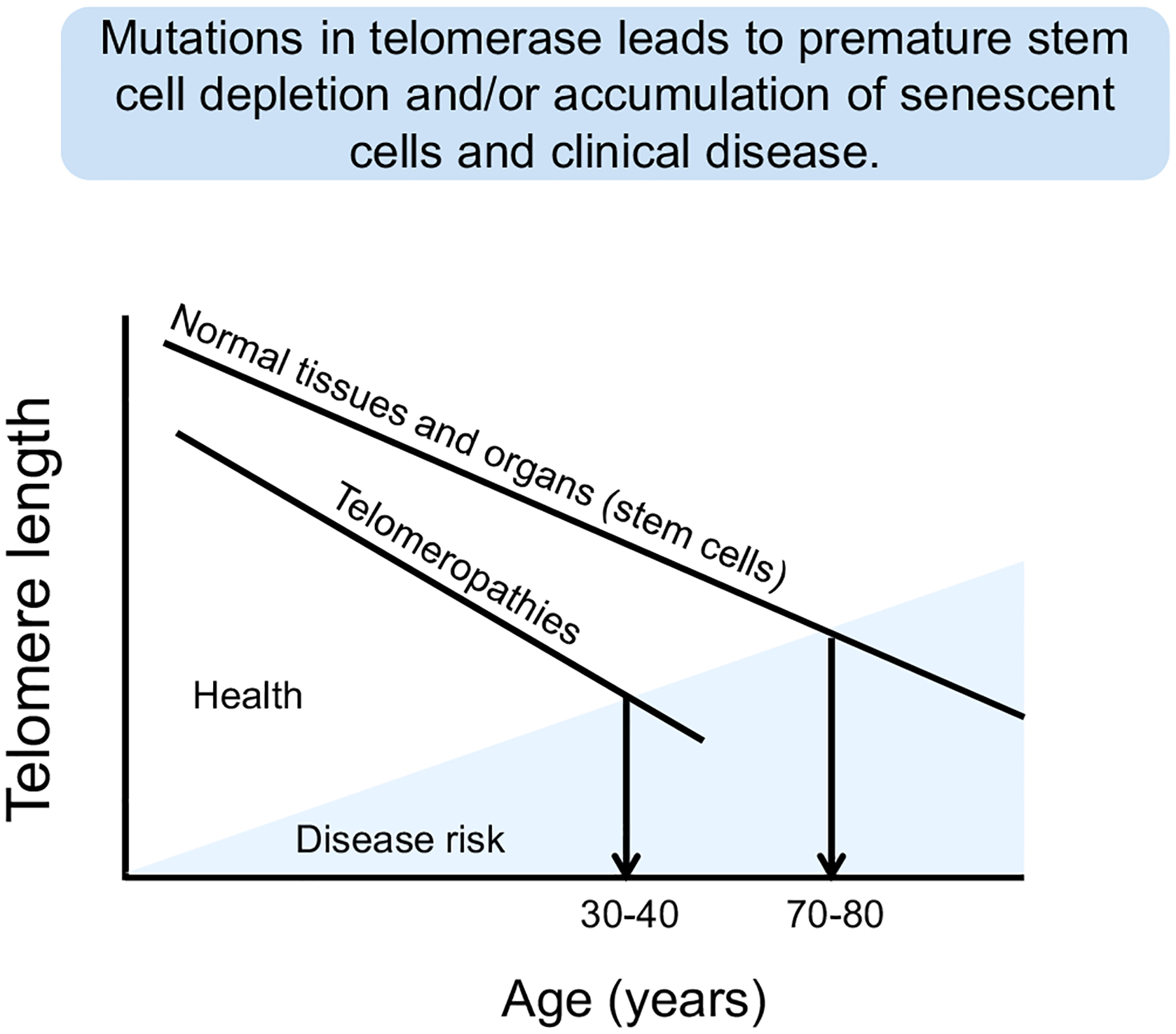Fig. 4.

While normal human cells in almost all tissues show progressive telomere shortening throughout life, disease risk is generally delayed until stem cells with greatly shortened telomeres cannot keep up with homeostatic tissue maintenance mechanisms. In patients with both primary and secondary telomeropathies, there is premature telomere shortening so the risk of onset of disease occurs much earlier in life depending on both the genetic inherited telomere length and the effect of the environment that may cause accelerated telomere shortening.
